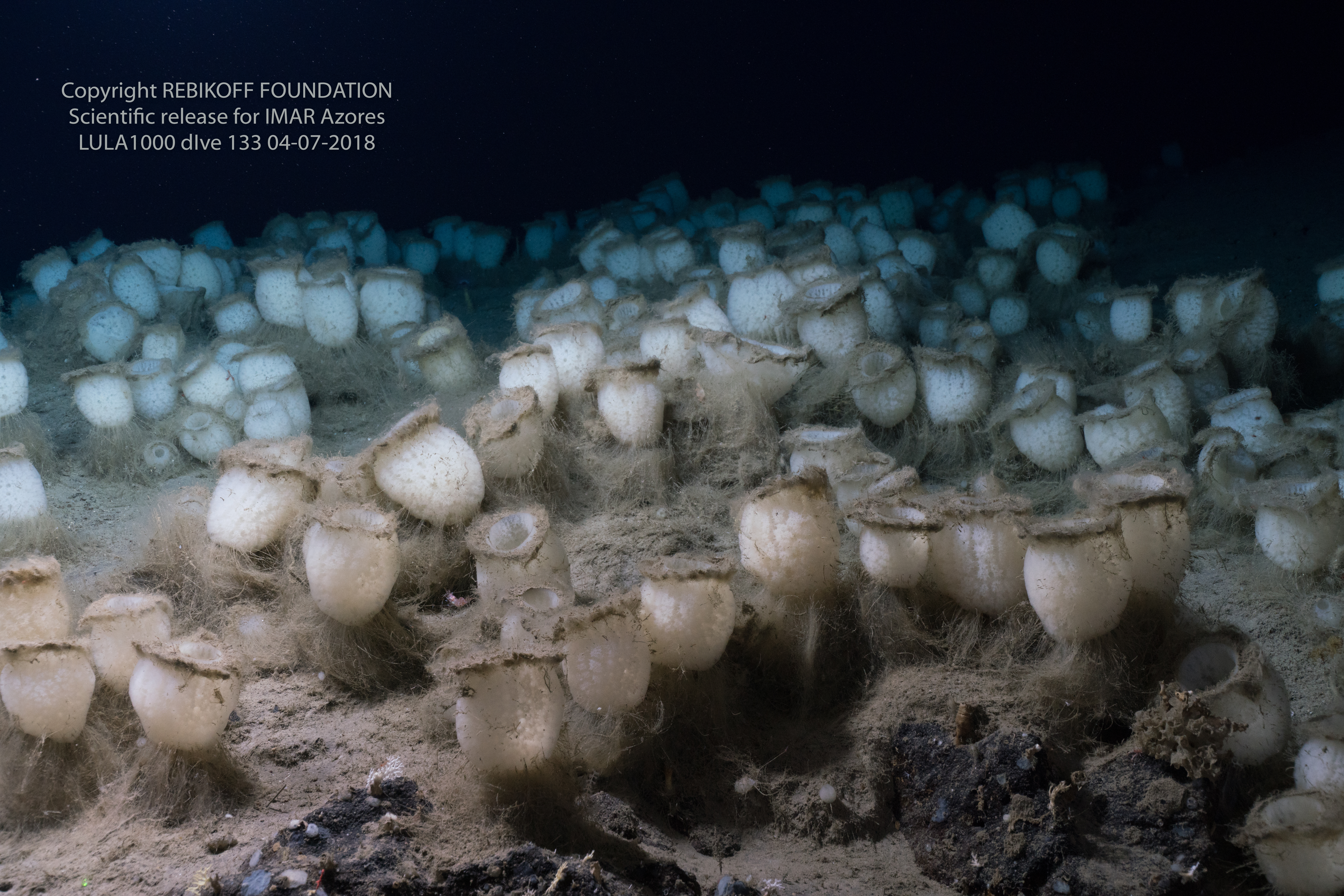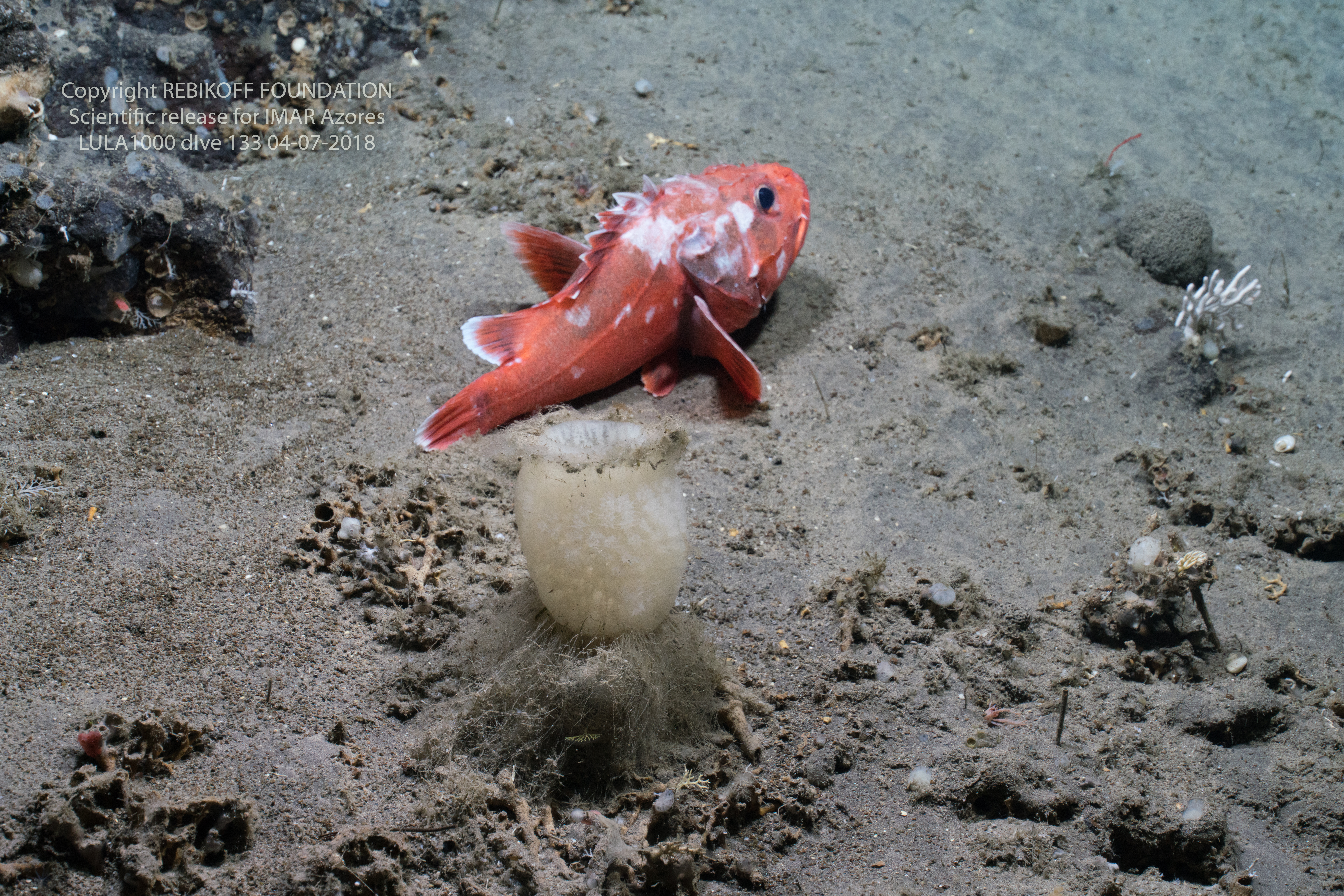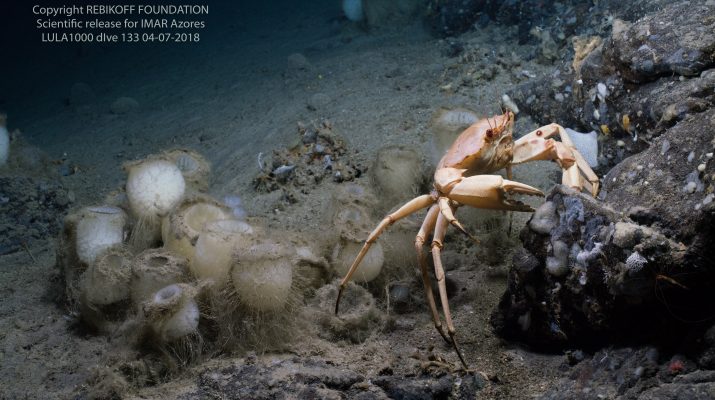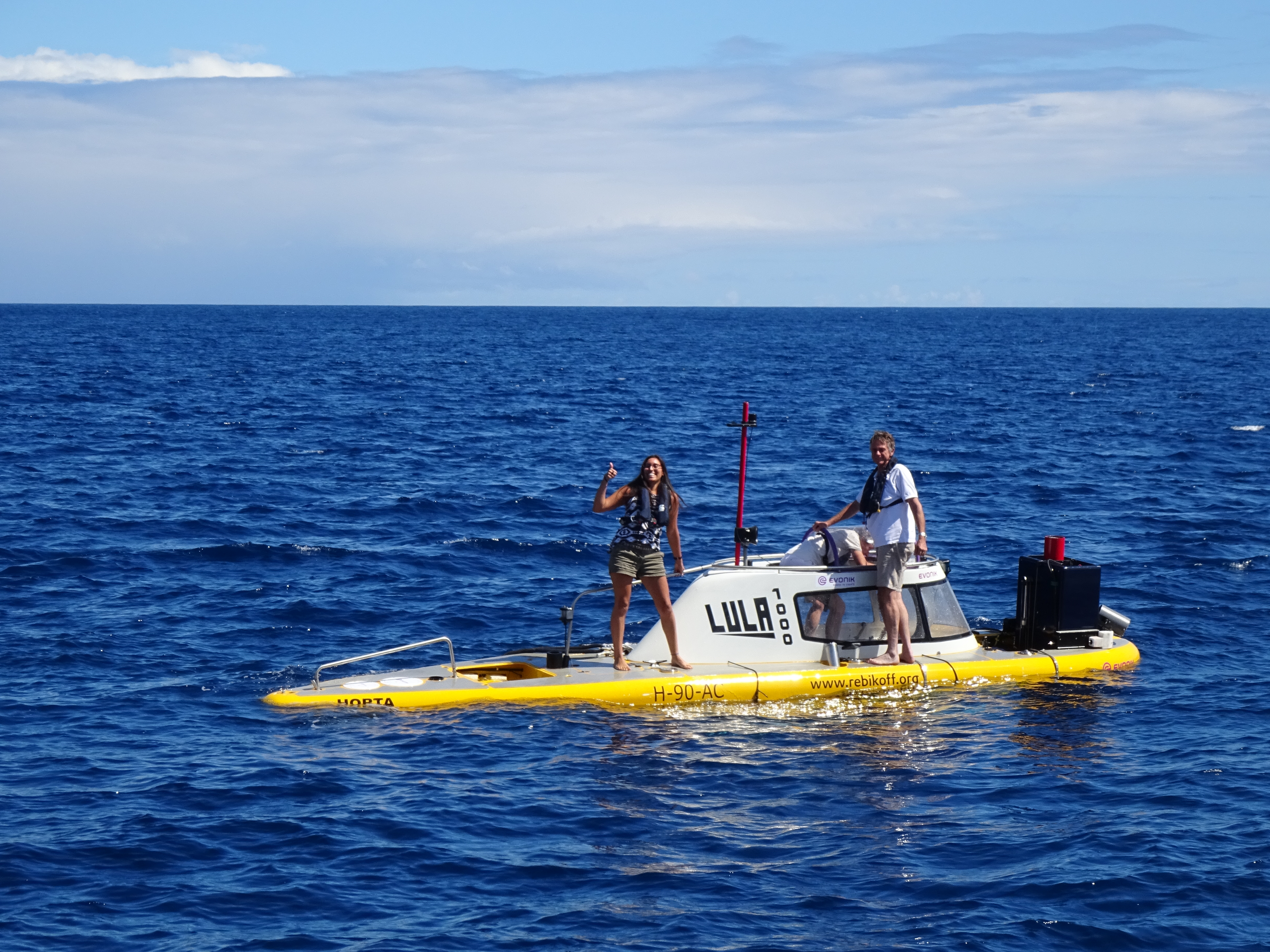[from Deep-Sea Life Vol 12]
Sponges on the rocks: Exploring a new deep-sea sponge ground of the Azores (Portugal)
Marie F. Creemers, Christopher Pham, Antoine Defise, Joana Goulard, Vasco Smith, Ana P. Silva, Ana Colaço
OKEANOS/ IMAR/ MARE – Department of Oceanography and Fisheries, University of the Azores, 9901-862 Horta,
Portugal
Email: marie.f.creemers@uac.pt
The recent discovery of a large aggregation of Pheronema sponges south of Pico island (Azores, Portugal) led to an exploratory campaign aboard the manned submersible LULA1000 of the Rebikoff-Niggeler Foundation in July 2018. Three dives were performed between 700 and 950 meters to obtain high-resolution imagery of this spectacular habitat, and to collect seawater and sponge samples to investigate the functional ecology and microbiology of Pheronema sponges. For that purpose, all dives were documented with high-resolution video footages and close-up still images, meanwhile sponges and seawater samples were also collected.
 Fig.1. Christopher Pham (picture above) and Marie Creemers (picture below), members of the Azores SponGES team, IMAR-Dept. of Oceanography & Fisheries, diving in the submersible LULA1000 of the Rebikoff-Niggeler Foundation to explore a Pheronema sponge aggregation
Fig.1. Christopher Pham (picture above) and Marie Creemers (picture below), members of the Azores SponGES team, IMAR-Dept. of Oceanography & Fisheries, diving in the submersible LULA1000 of the Rebikoff-Niggeler Foundation to explore a Pheronema sponge aggregation
During each dive, we were stunned by the high density of sponges (Fig. 2) and the great diversity of organisms associated with these aggregations, which included gorgonians, black corals Leiopathes sp., cf. Bathypathes sp.), paxillosid asteroids (Fig. 3), carid shrimps, ceriantharian tubedwelling anemones and erected bryozoans (Reteporella sp.) among others. In addition, various fish were encountered, such as the blackbelly rosefish (Helicolenus dactylopterus), the monkfish (Lophius sp.), the channeled rockfish (Setarches guentheri) (Fig. 4) and sea toads (Chaunax sp.). Moreover, different species of deep-sea cephalopods were observed within and in the vicinity of the ground, including oegopsid squids and octopods (cf. Pteroctopus tetracirrhus).



Back in the laboratory, sponge biometrics were measured, and pieces were taken for biochemical and food chain analyses. Additionally, the associated epifauna and infauna were collected for identification and quantification.
This expedition to a unique sponge ground revealed a diverse ecosystem inhabited by numerous benthic and bathypelagic species. Upcoming results of the food web analysis will help to understand and quantify the importance of Pheronema aggregations as a food supply for their associated fauna. Moreover, additional sponge samples were collected during other summer cruises of 2018 at different locations around the Azores. These samples will be analyzed following the same protocol to investigate the ecological role of Pheronema sponges at a larger spatial scale.
This research has been performed in the scope of the SponGES project, which received funding from the European Union’s Horizon 2020 research and innovation programme under grant agreement No 679849. Ana Colaço is supported by Programa Investigator (IF/00029/2014/CP1230/CT0002) from the FCT. The authors would like to acknowledge the LULA100 pilot and co-pilot Joachim and Kirsten Jakobsen from the Rebikoff-Niggeler Foundation for the videos and images. This document reflects only the authors’ view and the Executive Agency for Small and Mediumsized Enterprises (EASME) is not responsible for any use that may be made of the information it contains.



